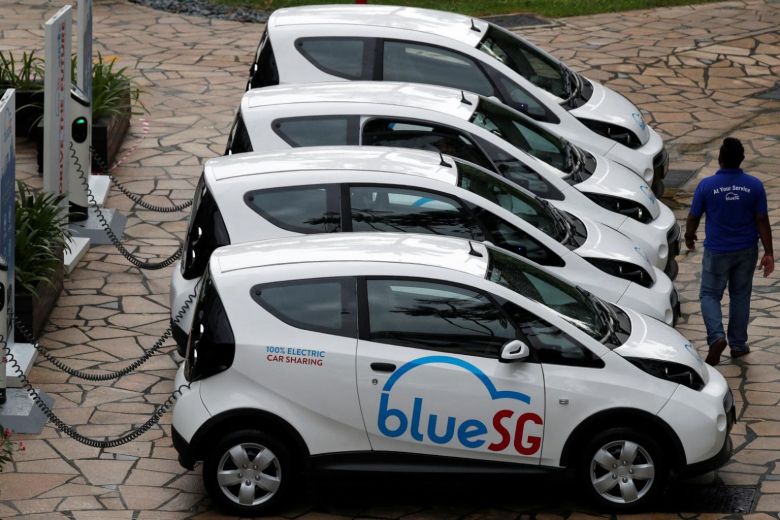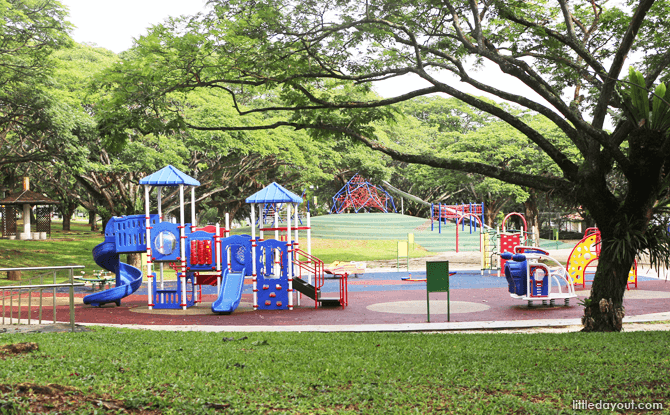Us Singaporeans love our malls. So I’m sure many of you know of and have been to City Square Mall, The Star Vista and 313 @ Somerset to eat, shop or play.
But did you know that these malls aren’t any ordinary ones? They are eco-malls! Specially and specifically designed to boast green spaces and be energy-efficient (using less energy to provide the same service), these malls are key features of Singapore’s plan to develop a sustainable city and community.
(Source: https://www.visitsingapore.com/editorials/eco-friendly-malls/)
However, being a sustainable city and community extends much further than greening our malls. What other features does our little island-city have that has allowed us to gain a reputation of a leading sustainable city, and one of the greenest, forward-thinking countries in the world?
What is a Sustainable City?
The United Nations Sustainable Development Goal 11 is Sustainable Cities and Communities which proposes to ‘make cities inclusive, safe, resilient and sustainable’. Sustainable cities and communities promote sustainable and affordable urban development by reducing energy and water usage, food wastage, and minimizing carbon emissions and pollution – amongst other things. They also possess advanced water and waste management systems in order to minimize waste while reusing that of which is produced.
What are the characteristics of a Sustainable City?
1. Energy
Energy is at the heart of all sustainable urban development. We burn coal, natural gas, and oil for energy to power our homes, cars, companies and virtually every other appliance in our everyday life. 38.9% of our nation’s carbon emissions (that contribute to global warming) is from energy-creation. In order to reduce that, our nation has placed a great emphasis on renewable energy1.
Renewables such as solar energy, wind energy and others, should be the main source of ALL power (electricity, transportation and cooling systems etc) in an examplary sustainable city. A variety of renewables should be considered when implementing an energy management portfolio – a guide to optimizing energy efficiency while considering costs and environmental impacts, through diverse energy sources (e.g. 50% Solar Energy, 10% Reclaimed Natural Gas from Anaerobic Digestion, 25% Fossil Fuels, 15% Wind Energy).
2. Transportation
Transportation is another vital sub-section of sustainable cities. Convenient, accessible, and carbon-neutral public transportation is essential to sustainable development. With the increased consumer demand and adoption of electric vehicles (EVs), cities should support this transition by installing more EV charging points. Singapore has plans to install 60,000 electric vehicle (EV) charging points by 2030.
This transport-transition can contribute significantly towards reduced congestion and improved air quality.

3. Green Buildings
A newer development in sustainable cities is the rise in the number of green buildings that apply sustainable elements into infrastructure (E.g. Advanced waste and water management systems, energy efficiency etc). Fitted with remote building energy monitoring systems, green buildings are designed to be highly energy-efficient. Furthermore, it is expected that from the start of the planning stage to the end of construction and the building’s continued management, green buildings are resource-efficient and water-efficient. The Singapore Building and Construction Authority established a Green Mark certification scheme that would credit such environmental endeavours.
As its name suggests, green buildings should also boast on-site green spaces such as vertical and rooftop gardens. Such methods of urban farming, inclusive of rooftop, vertical, and community gardens, should be widely developed in order to reduce carbon emissions whilst providing year-round fresh local produce which shortens local supply chains and promotes self-reliance. (The eco-malls mentioned above are some examples of green buildings!)

4. Water
Shifting towards water management, advanced technological innovations such as desalination and recycling of captured urban stormwater can allow cities to meet their water demands while preventing overfilling in canals and water bodies. Singapore has an advanced water management systems with the development of NEWater which treats reclaimed water to provide citizens with clean drinking water.
5. Nature
Last but not least, sustainable cities must ensure that all residents can easily access green spaces. There are a multitude of advantages of having more green spaces in the community, to list some: increased biodiversity (more natural spaces for new plants to grow and animals to roam, especially migratory birds), improves air quality, mitigates urban temperature and improves citizen well-being and health.
Singapore has plenty of green spaces, with community parks, nature reserves, gardens, beaches, mangrove forests and many other natural (and some man-made, such as the indoor forest at Jewel Changi Airport) ecosystems for people to experience nature.

(Source: https://www.littledayout.com/15-best-parks-in-singapore-for-families/)
Merging them all for Singapore’s First Eco-Town
Singapore’s Tengah Eco-town (UC) is planned to be a sustainable community haven. When complete, Tengah will feature centralized cooling partially powered by solar panels; an automated waste management system; and a car-free town centre which promotes cycling and walking. To support the latter, Tengah will have strategically located local hubs that will provide necessities that reduces the need for long commutes. This will also reduce traffic congestion and vehicular carbon emissions.
An advanced water management system will collect stormwater for recycling purposes. Furthermore, Tengah will feature a 5km forest corridor and community farming. An app will also be developed for Tengah residents with the aim of instigating public behavioural change by allowing residents to monitor their energy and water consumption.

(Source: https://www.todayonline.com/singapore/peek-tengah-next-new-hdb-town-size-bishan)
However, developing similar projects in Singapore would be challenging due to land scarcity. There is a finite area of land remaining for new sustainable development. Hence, Singapore needs to begin reimagining upgrades to mature estates to meet the needs of sustainability and to do this quickly. TPO in Tengah will begin in 2023 with full occupation of units between 2026 and 2028. This timeline doesn’t reflect the climate emergency present which demands all developments be fitted with green technologies to mitigate the effects of climate change.
Building a sustainable future
Sustainable development is the solution for countries and its people to progress and grow responsibly. While this article details numerous features of a sustainable city, there are many other characteristics that are necessary to ensure its success. Sustainability is like an organism: each part interdependent on the rest. Hence, for a sustainable city to function effectively, each sector needs to create and enforce programs to support sustainability goals.
Sources
- https://www.globalgoals.org/11-sustainable-cities-and-communities#:~:text=Make%20cities%20and%20human%20settlements%20inclusive%2C%20safe%2C%20resilient%20and%20sustainable.&text=For%20all%20of%20us%20to,and%20culturally%20inspiring%20living%20conditions.
- https://www.smartcitiesdive.com/ex/sustainablecitiescollective/21-features-future-sustainable-city/285946/
- http://www.fao.org/fao-stories/article/en/c/1260457/
- https://www.climaterealityproject.org/blog/five-sustainable-cities-making-difference-planet
- https://www.tutor2u.net/geography/reference/characteristics-of-a-sustainable-city
- https://en.wikipedia.org/wiki/Green_building
- https://archive.epa.gov/greenbuilding/web/html/components.html
- http://www.environmentalmanagementsystem.com.au/environmental-compliance.html
- https://greencitygrowers.com/consulting/leed-credits/
- Singapore Case Study Sources
- https://www.greengrowthknowledge.org/sites/default/files/downloads/best-practices/GGBP%20Case%20Study%20Series_Singapore_Sustainable%20City%20Singapore.pdf
- https://www.nationalgeographic.com/environment/article/green-urban-landscape-cities-Singapore
- https://www.nparks.gov.sg/skyrisegreenery/incentive-scheme
- https://edition.cnn.com/style/article/singapore-tengah-eco-town/index.html
- https://www1.bca.gov.sg/buildsg/sustainability/green-mark-certification-scheme
- https://www1.bca.gov.sg/buildsg/sustainability/green-mark-certification-scheme/verification
- https://www.mytengah.sg/
- https://thesmartlocal.com/read/tengah-bto/
- https://www.weforum.org/agenda/2021/04/singapore-sustainable-smart-town-tengah/
- https://www1.bca.gov.sg/buildsg/sustainability/green-building-masterplans
- https://www.greenplan.gov.sg/
- https://www.pub.gov.sg/watersupply/singaporewaterstory
- https://www.pub.gov.sg/watersupply/fournationaltaps/localcatchmentwater
- https://www.hdb.gov.sg/cs/infoweb/about-us/history/hdb-towns-your-home/tengah
Adapted from https://link.medium.com/5CjrI9sasib, edited by Cassandra Yip
Cover photo from https://steemit.com/travel/@traveltramp/singapore-where-the-jungle-meets-the-city



